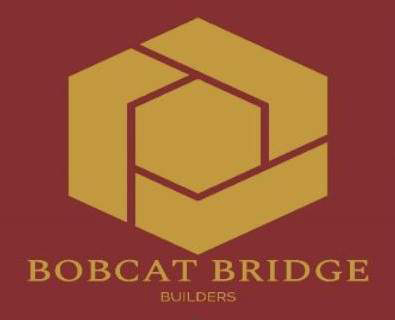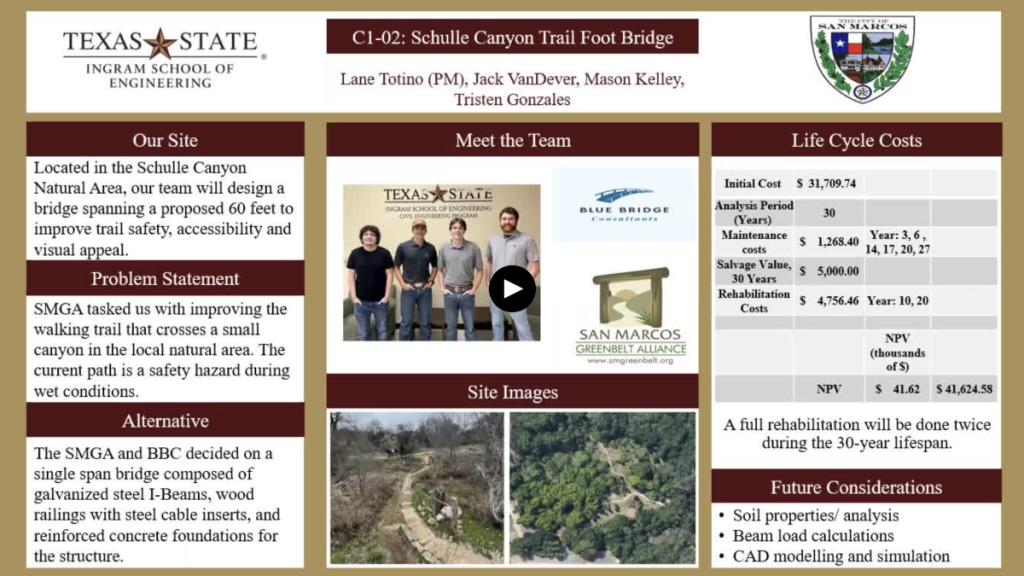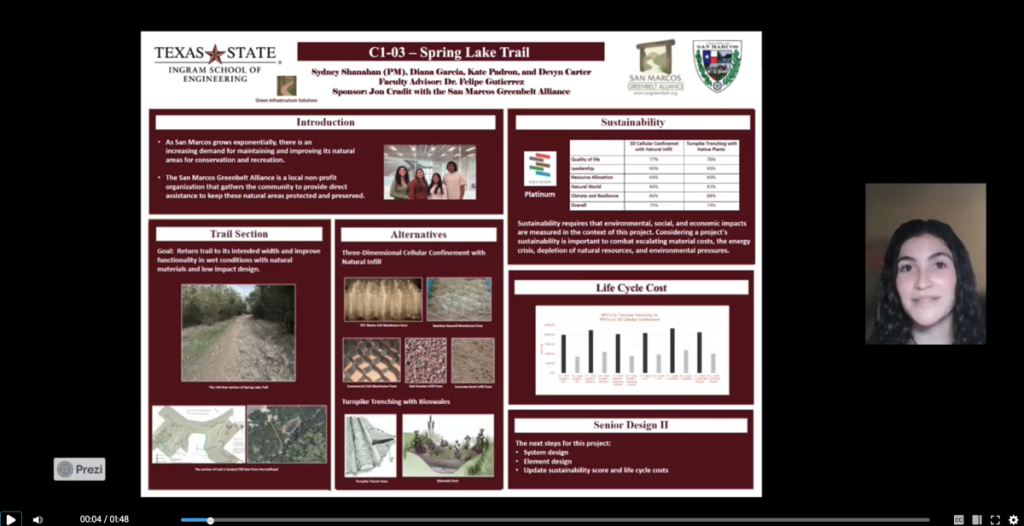Student Projects Address Need for Bridges & Improved Trail Access
Working with SMGA members Jon Cradit, Todd Derkacz, and Greg Moore, students in Dr. Felipe Gutierrez’s Civil Engineering Design class at Texas State University devoted the spring semester to creating designs for new pedestrian bridges in Spring Lake and Schulle Canyon Natural Areas and improving drainage on a trail in Spring Lake. They presented their final products at Senior Design Day on May 2.
Students’ Logos

The task of Bobcat Bridge Builders, as described on the class’s web page, was to design a pedestrian bridge spanning up to 40 feet that could be “completed by volunteers with minimal environmental impact, while avoiding moving [a] substantial amount of materials.” Additionally, the bridge would need to be strong enough to support two horses or one UTV used by the city’s park police. The main construction challenge for this project would come from Spring Lake’s rough terrain, which doesn’t allow for the use of heavy equipment or motorized vehicles.
The two options proposed by the group are a prefabricated concrete bridge built off-site or a cast-in-place reinforced concrete bridge. In both cases, volunteers from SMGA would be responsible for building the city-funded structure.
Photo caption: SMGA members Jon Craddit and Greg Moore with students Ian Lattie, Hayden VanderRoest, Isaac Nino, and Cason Grumbles.

Blue Bridge Consultants were charged with designing a 60-foot bridge across Schulle Canyon Creek. Because this trail is inaccessible during heavy rainfall, the student’s task was to create a plan that would improve safety and usability. According to the class’s website, SMGA and the student designers agreed on “a single span bridge composed of galvanized steel I-Beams, wood railings with steel cable inserts, and reinforced concrete foundations for the structure.”
Photo caption: Jon Cradit and Greg Moore with students Tristen Gonzales, Lane Totino, Jack VanDever, and Mason Kelley.
Unlike the other two student groups, Green Infrastructure Solutions was asked to propose a way to improve a trail rather than design a bridge. As the class’s website explains, “A 140-foot section of Spring Lake Trail is susceptible to swamping on the footpath due to rain, soil characteristics, and its positioning on an incline. Water percolates through the Buda limestone caprock and is retained in a 20–30-foot clayey layer where the section of path is located. When the Del Rio Clay becomes saturated, the path may not be suitable to use for days. When this occurs, hikers find new paths around the sodden soil, widening the trail. This project aims to return the trail to its intended width and improve functionality in wet conditions with natural materials and low impact design.”
To accomplish this, the students offered two alternatives: one, laying down a honeycombed membrane, or geocell, over the trail and filling it in with gravel or another natural material, and the other, digging a turnpike trench along the trail and creating a bioswale.
As part of their project, all three groups included information about sustainability, cost, and the next steps for implementation.













